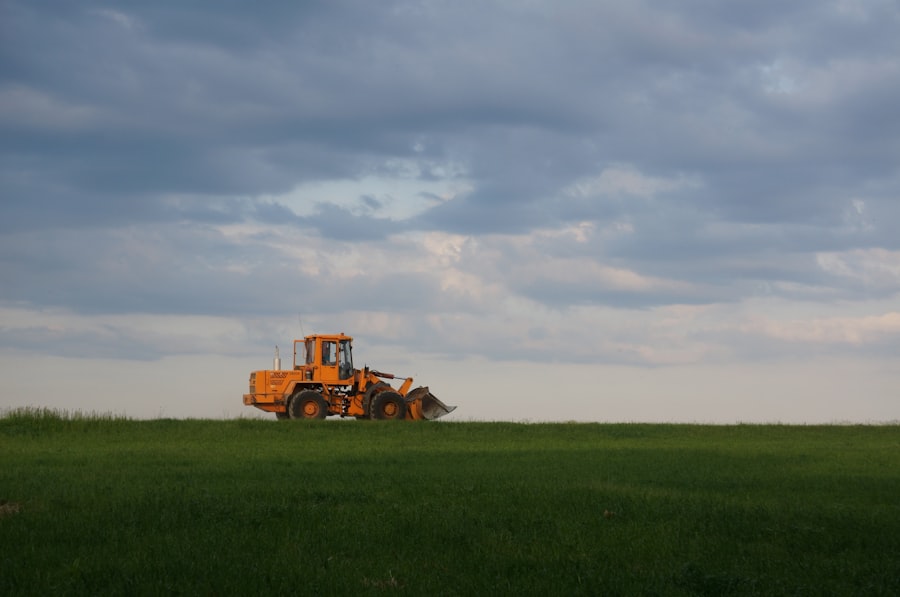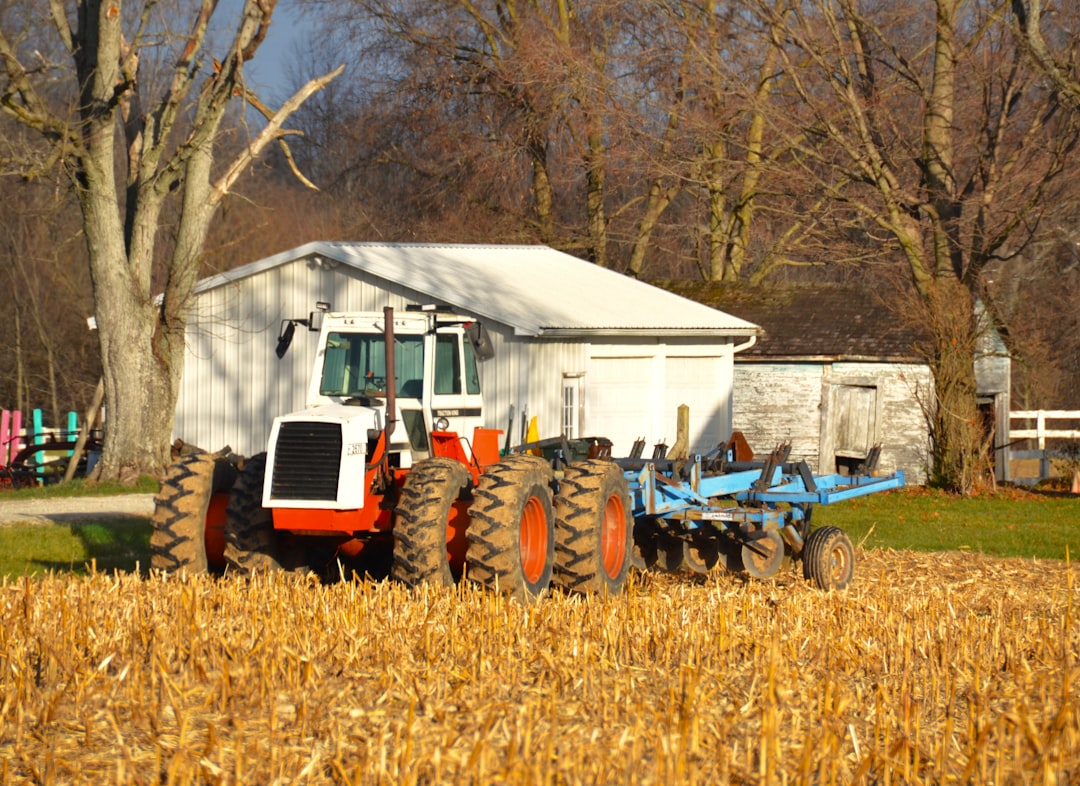Farmland debt leverage refers to the practice of using borrowed funds to acquire agricultural land or finance farming operations. This financial strategy allows farmers to amplify their purchasing power, enabling them to invest in larger tracts of land or modernize their equipment and facilities. By leveraging debt, farmers can potentially increase their returns on investment, as the income generated from the land can exceed the cost of borrowing.
However, this approach is not without its complexities and challenges, as it intertwines the financial health of agricultural enterprises with broader economic conditions. The concept of leverage in farmland debt is rooted in the idea that by borrowing against the value of their land, farmers can access capital that would otherwise be unavailable. This can be particularly beneficial in a sector where upfront costs are high and cash flow can be unpredictable.
Farmers often find themselves in a position where they must balance the potential for increased profits against the risks associated with taking on debt. Understanding this balance is crucial for making informed decisions about land acquisition and operational financing.
Key Takeaways
- Farmland debt leverage refers to the use of borrowed funds to finance agricultural operations and land purchases.
- Risks of farmland debt leverage include exposure to interest rate fluctuations, commodity price volatility, and natural disasters.
- Farmland debt leverage can impact farmers and the agricultural industry by affecting cash flow, investment decisions, and overall financial stability.
- Factors contributing to farmland debt leverage include low interest rates, high land prices, and the need for capital-intensive farming equipment.
- Farmland debt leverage can have effects on rural communities such as reduced economic resilience and increased financial strain on local businesses.
- Strategies for managing farmland debt leverage include diversifying income sources, maintaining a strong financial position, and seeking professional financial advice.
- Government policies can influence farmland debt leverage through regulations on lending practices, subsidies, and support programs for farmers.
- Financial institutions play a role in farmland debt leverage by providing loans, financial products, and risk management services to agricultural clients.
- Case studies of farmland debt leverage can provide insights into successful and unsuccessful approaches to managing debt in the agricultural sector.
- Long-term consequences of farmland debt leverage may include farm bankruptcies, land consolidation, and reduced agricultural productivity.
- Seeking solutions for farmland debt leverage involves collaboration between farmers, policymakers, financial institutions, and other stakeholders to address systemic challenges and promote sustainable agricultural practices.
The Risks of Farmland Debt Leverage
While leveraging debt can provide opportunities for growth, it also introduces significant risks that farmers must navigate. One of the primary concerns is the volatility of agricultural markets, which can lead to fluctuations in income.
This scenario can create a cycle of financial distress, where the inability to repay loans leads to further borrowing or even foreclosure. Moreover, the reliance on debt can limit a farmer’s flexibility in responding to market changes. High levels of indebtedness may restrict their ability to invest in new technologies or adapt to shifting consumer preferences.
As a result, farmers may find themselves at a competitive disadvantage compared to those who maintain lower debt levels. The psychological burden of debt can also weigh heavily on farmers, affecting their decision-making processes and overall well-being.
Impact on Farmers and Agricultural Industry

The impact of farmland debt leverage extends beyond individual farmers; it reverberates throughout the agricultural industry as a whole. When farmers are heavily indebted, their purchasing power diminishes, which can lead to reduced spending on inputs such as seeds, fertilizers, and equipment. This contraction in demand can have a cascading effect on suppliers and service providers within the agricultural sector, potentially stunting growth and innovation.
Additionally, high levels of farmland debt can contribute to market consolidation, as financially strained farmers may be forced to sell their land to larger agribusinesses or investors. This trend can erode the traditional family farm model, leading to fewer independent operators and a more homogenized agricultural landscape. The loss of diversity in farming practices and crop production can have long-term implications for food security and rural economies.
Factors Contributing to Farmland Debt Leverage
| Factors | Contributing to Farmland Debt Leverage |
|---|---|
| Low crop prices | Increased borrowing to cover costs |
| High input costs | Pressure on farm profitability |
| Interest rate increases | Higher cost of borrowing |
| Decreased land values | Reduced collateral for loans |
Several factors contribute to the increasing prevalence of farmland debt leverage among farmers. One significant driver is the rising cost of land itself, which has escalated in many regions due to demand from both agricultural and non-agricultural buyers. As land prices soar, farmers often feel compelled to borrow more to secure their operations, leading to higher levels of indebtedness.
Additionally, fluctuations in commodity prices play a crucial role in shaping farmers’ financial strategies. When prices are high, farmers may be more inclined to take on debt to expand their operations or invest in improvements. Conversely, during periods of low prices, they may struggle to service existing debts while attempting to maintain profitability.
This cyclical nature of agricultural economics creates an environment where debt leverage becomes a common strategy for survival.
Effects of Farmland Debt Leverage on Rural Communities
The effects of farmland debt leverage extend into rural communities, influencing social and economic dynamics. As farms become more indebted and potentially face foreclosure, local economies can suffer from job losses and decreased spending power. The decline of family farms can lead to a loss of community identity and cohesion, as these farms often serve as cultural and social hubs within rural areas.
Moreover, the concentration of land ownership among fewer entities can exacerbate inequalities within rural communities. As larger agribusinesses acquire more land, smaller farmers may find it increasingly difficult to compete, leading to a homogenization of agricultural practices and a reduction in local food systems. This shift can diminish the resilience of rural economies and reduce access to fresh produce for local residents.
Strategies for Managing Farmland Debt Leverage

To mitigate the risks associated with farmland debt leverage, farmers can adopt several strategies aimed at improving their financial resilience. One effective approach is diversifying income sources by exploring alternative crops or value-added products. By broadening their revenue streams, farmers can reduce reliance on any single commodity and better withstand market fluctuations.
Additionally, prudent financial management practices are essential for navigating the complexities of debt leverage. Farmers should regularly assess their financial health, monitor cash flow, and maintain open lines of communication with lenders. Establishing a solid financial plan that includes contingency measures for unexpected downturns can help safeguard against potential crises.
Government Policies and Farmland Debt Leverage
Government policies play a pivotal role in shaping the landscape of farmland debt leverage. Programs designed to support farmers through subsidies, grants, or low-interest loans can provide much-needed assistance in managing debt levels. These initiatives can help stabilize farm incomes and encourage sustainable practices that promote long-term viability.
However, there is also a need for policies that address the root causes of excessive farmland debt leverage. Regulatory frameworks that promote fair lending practices and prevent predatory lending can protect farmers from falling into cycles of debt that are difficult to escape. Additionally, policies aimed at preserving family farms and supporting small-scale agriculture can help maintain diversity within the agricultural sector.
The Role of Financial Institutions in Farmland Debt Leverage
Financial institutions are key players in the realm of farmland debt leverage, providing the capital necessary for farmers to expand their operations or invest in improvements. However, the relationship between farmers and lenders is complex and requires careful navigation. While access to credit is essential for growth, it is equally important for financial institutions to understand the unique challenges faced by farmers.
Lenders must adopt responsible lending practices that consider the cyclical nature of agriculture and the inherent risks involved. By offering flexible repayment terms and tailored financial products, institutions can support farmers in managing their debt levels effectively. Building strong relationships between lenders and borrowers fosters trust and encourages open communication about financial challenges.
Case Studies of Farmland Debt Leverage
Examining case studies of farmland debt leverage provides valuable insights into its implications for individual farmers and the broader agricultural landscape. For instance, one case study might focus on a family farm that expanded its operations through leveraged debt during a period of high commodity prices. Initially successful, the farm later faced significant challenges when prices plummeted due to market oversupply.
Another case study could highlight a cooperative model where multiple small-scale farmers pooled resources to access credit collectively. This approach allowed them to share risks associated with debt while maintaining independence from larger agribusinesses. Such examples illustrate the diverse strategies employed by farmers in navigating the complexities of farmland debt leverage.
Long-term Consequences of Farmland Debt Leverage
The long-term consequences of farmland debt leverage are multifaceted and warrant careful consideration. On one hand, successful leveraging can lead to increased productivity and profitability for some farmers, enabling them to invest in sustainable practices and innovative technologies. However, for others who mismanage their debts or face adverse market conditions, the consequences can be dire.
Over time, excessive farmland debt leverage may contribute to a cycle of consolidation within the agricultural sector, where larger entities dominate while smaller farms struggle or disappear altogether. This trend could lead to reduced biodiversity in farming practices and increased vulnerability within food systems as fewer players control more resources.
Seeking Solutions for Farmland Debt Leverage
Addressing the challenges posed by farmland debt leverage requires collaborative efforts among various stakeholders, including farmers, financial institutions, government agencies, and community organizations. Developing educational programs that equip farmers with financial literacy skills can empower them to make informed decisions about leveraging debt responsibly.
By working together to find innovative solutions, stakeholders can help ensure that farmland remains accessible and viable for future generations while mitigating the risks associated with excessive debt leverage. In conclusion, farmland debt leverage is a complex issue that intertwines financial strategy with broader economic realities in agriculture. While it offers opportunities for growth and expansion, it also poses significant risks that must be managed carefully.
By understanding these dynamics and seeking collaborative solutions, stakeholders can work towards a more sustainable agricultural future that benefits both farmers and rural communities alike.
In recent years, the issue of farmland debt leverage has become a growing concern among financial analysts and agricultural economists. As farmers increasingly rely on borrowed capital to expand operations and invest in new technologies, the risk of over-leverage looms large, potentially threatening the stability of the agricultural sector. An insightful article on this topic can be found on How Wealth Grows, which delves into the implications of rising farmland debt and offers strategies for managing financial risk. For more detailed information, you can read the full article by visiting
